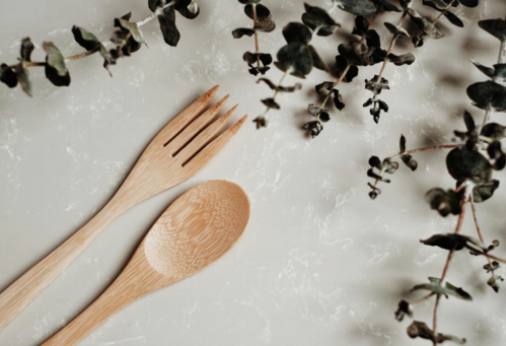Why Water-Saving Fixtures are Essential for Every Home
22 March 2025 by Mariyah L.Water is an essential resource that is often taken for granted in many households. However, with the growing concern over water scarcity and the impact of climate change, it has become increasingly important for homeowners to prioritize water conservation. One effective way to do this is by installing water-saving fixtures in your home. These fixtures not only help reduce water wastage, but also offer a range of benefits, from cost savings to environmental protection. In this article, we will explore the significance of water-saving fixtures and why they are essential for every home.

Low-flow faucets: These faucets are designed to restrict the flow of water, reducing the amount of water that is used during everyday tasks such as washing hands or dishes.
Low-flow showerheads: Similar to low-flow faucets, low-flow showerheads are designed to reduce the amount of water that is used during showers while still providing adequate water pressure.
Dual-flush toilets: Dual-flush toilets have two flushing options – a low-flush option for liquid waste and a high-flush option for solid waste. This allows for water conservation by using less water when flushing liquid waste.
Aerators: Aerators are small attachments that can be added to faucets to reduce the flow of water while maintaining water pressure. They are a simple and cost-effective way to save water in the home.
Rain barrels: Rain barrels collect rainwater from gutters and downspouts, which can then be used for watering plants and gardens instead of using treated water from the faucet.
Water-efficient appliances: Water-efficient appliances such as washing machines and dishwashers use less water during their cycle, helping to save water and reduce water bills. By installing these water-saving fixtures in your home, you can help contribute to water conservation efforts and reduce your water usage. These fixtures are easy to install and can make a significant impact on your water consumption and utility bills.

Introduction to Water Conservation
Water is a precious resource that is essential for all life on Earth. With a growing population and increasing demand for clean water, it is more important than ever to conserve this valuable resource. Water conservation is the practice of using water efficiently to reduce unnecessary waste. By implementing water-saving fixtures in our homes, we can significantly decrease our water usage and contribute to the preservation of this vital resource for future generations. In this article, we will explore the importance of water conservation and the benefits of installing water-saving fixtures in every home.The Impact of Water-Saving Fixtures
Water-saving fixtures play a crucial role in conserving water and reducing our overall environmental impact. By installing these fixtures in our homes, we can significantly decrease the amount of water we use on a daily basis. This, in turn, helps to alleviate the strain on our water resources and ensure a sustainable future for generations to come. One of the key benefits of water-saving fixtures is their ability to reduce water consumption. Traditional fixtures often waste a significant amount of water through leaks, inefficiency, and unnecessary usage. By switching to water-saving fixtures, homeowners can cut down on their water usage without sacrificing comfort or convenience. This not only helps to save money on water bills, but also reduces the overall demand on our water supply. In addition to reducing water consumption, water-saving fixtures also help to lower energy usage. The less hot water we use, the less energy we need to heat that water. This not only reduces our energy bills, but also decreases our carbon footprint and helps combat climate change. By using water-saving fixtures, homeowners can make a positive impact on both their wallets and the environment. Furthermore, water-saving fixtures can also help to improve water quality. By using less water, we reduce the amount of wastewater that needs to be treated and disposed of. This can help to prevent water pollution and protect our water sources for future generations. Additionally, water-saving fixtures can help to reduce the strain on local water treatment facilities, leading to a more efficient and cost-effective water infrastructure. Overall, the impact of water-saving fixtures is significant and far-reaching. By installing these fixtures in our homes, we can take a proactive approach to water conservation and help create a more sustainable future for our planet.Types of Water-Saving Fixtures
Water-saving fixtures are essential for every home to help conserve water and reduce water usage. There are various types of water-saving fixtures available on the market that can be easily installed in homes to help save water. These fixtures include:Low-flow faucets: These faucets are designed to restrict the flow of water, reducing the amount of water that is used during everyday tasks such as washing hands or dishes.
Low-flow showerheads: Similar to low-flow faucets, low-flow showerheads are designed to reduce the amount of water that is used during showers while still providing adequate water pressure.
Dual-flush toilets: Dual-flush toilets have two flushing options – a low-flush option for liquid waste and a high-flush option for solid waste. This allows for water conservation by using less water when flushing liquid waste.
Aerators: Aerators are small attachments that can be added to faucets to reduce the flow of water while maintaining water pressure. They are a simple and cost-effective way to save water in the home.
Rain barrels: Rain barrels collect rainwater from gutters and downspouts, which can then be used for watering plants and gardens instead of using treated water from the faucet.
Water-efficient appliances: Water-efficient appliances such as washing machines and dishwashers use less water during their cycle, helping to save water and reduce water bills. By installing these water-saving fixtures in your home, you can help contribute to water conservation efforts and reduce your water usage. These fixtures are easy to install and can make a significant impact on your water consumption and utility bills.